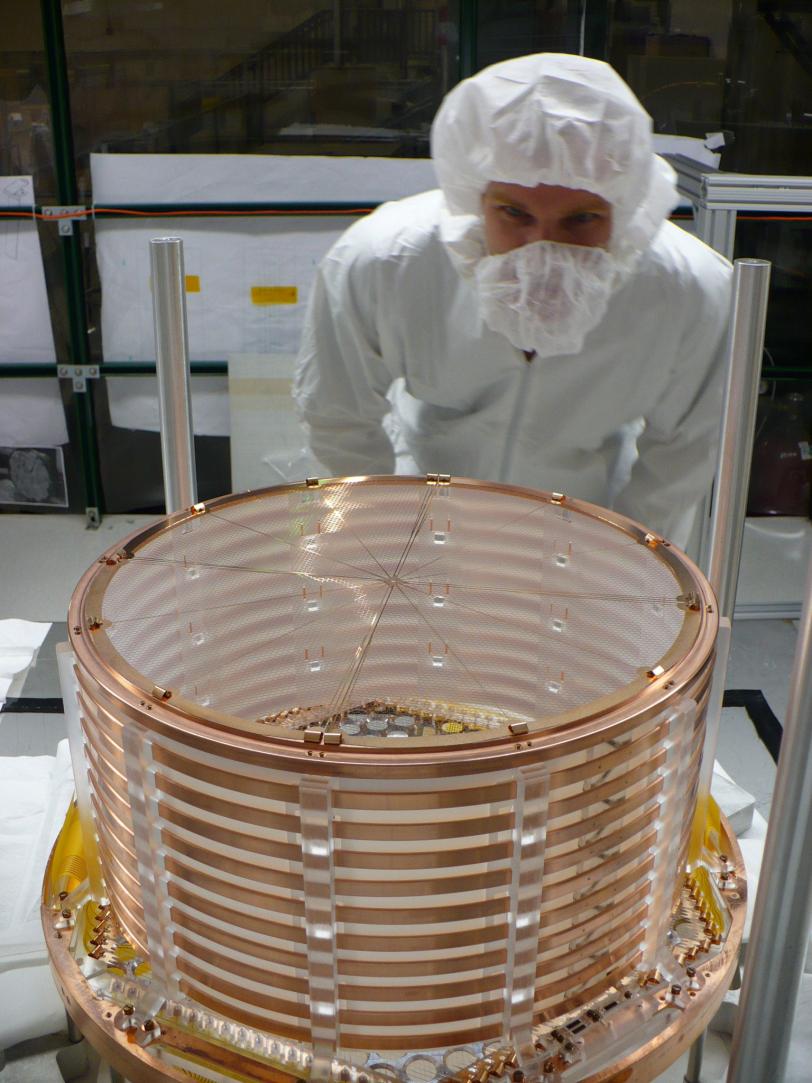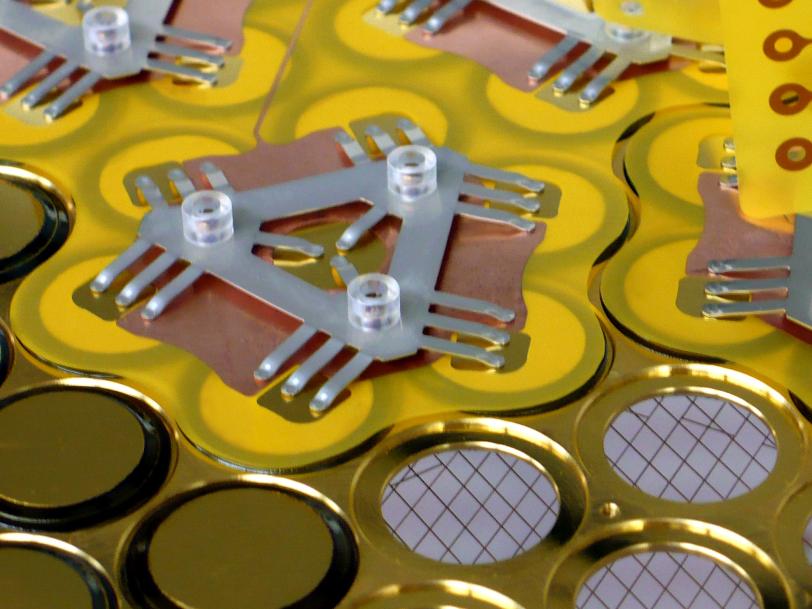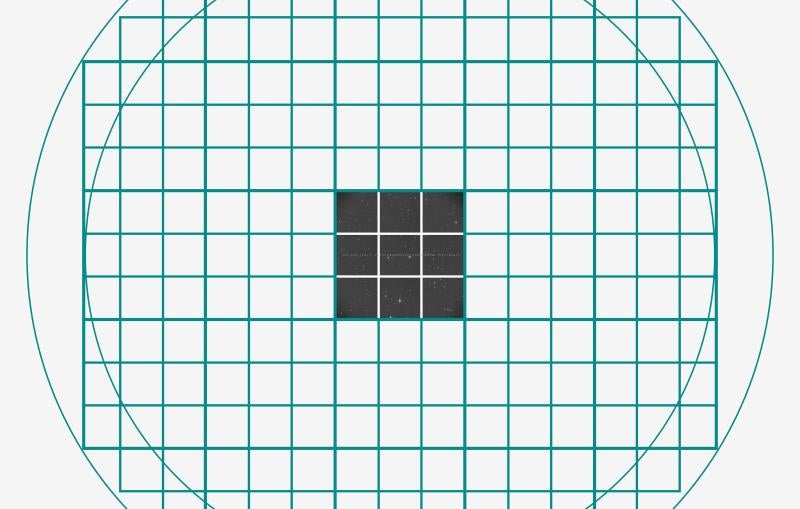How Slow is Slow? EXO Knows!
Cooks think of watched pots. Handymen grumble about drying paint.
By Lori Ann White
Cooks think of watched pots. Handymen grumble about drying paint. Kids dread the endless night before Christmas morning.
Turns out physicists have their own expression to convey the concept of "slow," and now, thanks to the Enriched Xenon Observatory (EXO), they know how slow "slow" really is: The flurry of activity during the 13.75 billion years from the Big Bang to us was positively hasty in comparison.
The expression is "2nubb" and it stands for "two-neutrino double-beta decay", a rare type of particle decay undergone by certain forms of radioactive elements. In this type of decay, two neutrons, the neutral subatomic particles in the nucleus of an atom, spontaneously decay into two protons, two electrons, and two antineutrinos, which are the antimatter twins of the tiny, nearly massless mystery particles called neutrinos. The EXO team announced yesterday at a conference in Munich that, according to their measurements of two-neutrino double-beta decay in Xe-136, an isotope of xenon, the half-life of the process clocks in at 2.11 x 10^21 years. In other words, it would take 100 billion times longer than the universe has even existed for half of a sample of this radioactive isotope to decay via the 2nubb decay pathway.
"This represents the slowest Standard Model process ever measured," said Giorgio Gratta, Stanford University physicist and member of the joint SLAC-Stanford Kavli Institute for Particle Astrophysics and Cosmology, who leads the team. The Standard Model is the best description scientists have for the way all the building blocks of matter, like the aforementioned neutrons, protons and electrons, fit together, and why two-neutrino double-beta decay happens in the first place.
Two-neutrino double-beta decay fits neatly within the Standard Model, "so in this sense the observation was not unexpected," Gratta said. In fact, this form of decay has been seen before in other elements. "In that sense, it is not even new."
Even so, the team's results mean much more than a shot at the Guinness Book of World Records.
The EXO 200 detector is the first to capture the 2nubb decay process in Xe-136, for example, and the measurement is based on little more than a month of data – "remarkably clean" data, with very little interference from background noise, Gratta explained. This solid signal has provided valuable data to theorists, enabling them to resolve puzzling discrepancies between their calculations and the results of previous experiments.
But the experiment is far from over, and the speed and clarity of these early results bode well for the team as they go after their real quarry.
What the EXO 200 team wants to find is another decay process – one that is not only even more fantastically rare than 2nubb, but that no one is certain even exists. It's called zero-neutrino double-beta decay, or 0nubb, and it is decidedly not a Standard Model process.
In 0nubb, two neutrons once again decay into two protons and two electrons, but the antineutrinos are nowhere to be found. They must have been there; the IRS has nothing on Nature for keeping the books balanced. The two antineutrinos must have annihilated each other, like positrons and electrons can annihilate each other, or protons and anti-protons, or any particle and its antiparticle.
This means in order for 0nubb decay to happen, neutrinos must be their own antiparticles.
Odd as this sounds, the possibility of a particle that could be both itself and its anti-self was hypothesized by an Italian theoretical particle physicist named Ettore Majorana in 1937. Such particles are called Majorana particles, and if they exist physicists would need to get busy revising the Standard Model.
"This is a decay that people have been trying to find for a long time," Gratta said.
"Zero-neutrino double-beta decay would be a big deal," agreed Marty Breidenbach, SLAC physicist and EXO team member. He explained how the EXO 200 experiment intends to pursue such a prize. It all comes down to distinguishing between something that's nearly impossible to see because of its rarity and something that's clearly impossible to see because it may not even exist.
The team's chief strategy is to give the 0nubb decays as many opportunities to happen and as few places to hide as possible. A detector chamber filled with 200 kilograms of liquid xenon takes care of the first strategic objective – the xenon has been enriched until it's 80 percent Xe-136, the double-beta decaying isotope – but the second one is a bit tougher.
In order to make sure they'll recognize 0nubb – or even 2nubb – decays, the team has had to cut out every other source of radioactivity they could. The equipment, made of ultrapure, ultraclean, non-radioactive materials, was constructed at Stanford University and trucked, not flown – flying would expose it to more cosmic rays – to the Chihuahuan Desert near Carlsbad, New Mexico, where it was installed about a half-mile underground in the salt bed used by the Waste Isolation Pilot Plant, the Department of Energy's repository for nuclear waste. The choice seems odd, but the reasoning was sound. The same salt that keeps radioactivity from nuclear waste trapped in the repository keeps radioactivity from cosmic rays and decaying rocks out of the EXO 200 detector.
As the low background readings in their initial results show, the EXO 200 strategy seems to be working. According to Breidenbach, the experiment will continue to take data for several years, possibly as many as five, depending on progress with what's called "full EXO," an experiment using several tons of Xe-136 that's currently in development.
"EXO 200 was always intended as a pilot project," Breidenbach said. "We're actively doing R&D for full EXO."
In the meantime, there's no moss gathering on the EXO collaboration. EXO 200 has already made its mark.
The EXO collaboration comprises researchers from the following institutions: Department of Physics and Astronomy, University of Alabama, Tuscaloosa AL, USA; LHEP, Albert Einstein Center, University of Bern, Bern, Switzerland; Kellogg Lab, Caltech, Pasadena CA, USA; Physics Department, Carleton University, Ottawa ON, Canada; Physics Department, Colorado State University, Fort Collins CO, USA; Physics Department and CEEM, Indiana University, Bloomington IN, USA; Institute for Theoretical and Experimental Physics, Moscow, Russia; Physics Department, Laurentian University, Sudbury ON, Canada; Physics Department, University of Maryland, College Park MD, USA; Physics Department, University of Massachusetts, Amherst MA, USA; Department of Physics, University of Seoul, Seoul, Korea; SLAC National Accelerator Laboratory, Stanford CA, USA; Physics Department, Stanford University, Stanford CA, USA; Technical University Munich, Munich, Germany; Waste Isolation Pilot Plant, Carlsbad NM, USA.
Contact
For questions or comments, contact the SLAC Office of Communications at communications@slac.stanford.edu.







